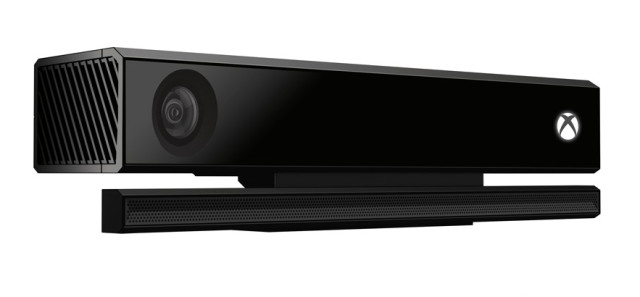
Microsoft has announced the shipment of thousands of second-generation Kinect sensors for Windows to developers all across the globe. This is just the first wave of shipments as Microsoft plans to deploy more Kinect sensors globally over the coming weeks. The new Kinect sensor was available for pre-order in the beginning of June in 22 markets.
In conjunction with shipments of the second-gen Kinect sensors to developers, Microsoft has also released a preview version of the Kinect SDK 2.0 for Windows. This will allow developers everywhere to take advantage of the new SDK and begin exploring the Kinect’s capabilities. A final version of the SDK will be released in the coming months.
As per Microsoft's announcement, some of the key features of the new Kinect sensor include:
- Improved skeletal tracking: The enhanced fidelity of the depth camera, combined with improvements in the software, have led to a number skeletal tracking developments. In addition to now tracking as many as six complete skeletons (compared to two with the original sensor), and tracking 25 joints per person (as compared to 20 with the original sensor), the tracked positions are more anatomically correct and stable—and the range of tracking is broader. This enables and simplifies many scenarios, including more stable avateering, more accurate body position evaluation, crisper interactions, and more bystander involvement in interactive scenarios.
- Higher depth fidelity: With higher depth fidelity and a significantly improved noise floor, the v2 sensor gives you better 3D visualization, increased ability to see smaller objects and all objects more clearly, and more stable skeletal tracking.
- 1080p HD video: The color camera captures full, beautiful 1080p video that can be displayed in the same resolution as the viewing screen, allowing for a broad range of powerful scenarios. In addition to improving video communications and video analytics applications, this provides a great input on which to build high-quality, augmented reality scenarios, digital signage, and more.
- New active infrared capabilities: In addition to allowing the Kinect for Windows v2 sensor to see in the dark, the new infrared (IR) capabilities produce a lighting-independent view, which makes machine learning or computer-vision–based tasks much easier—because you don’t have to account for or model lighting-based variation. And, you can now use IR and color at the same time. We look forward to the many new and innovative uses that the community will develop to use this fundamentally new capability.
- Wider/expanded field of view: The expanded field of view enables a larger area of a scene to be captured by the camera. As a result, users can be closer to the camera and still in view, and the camera is effective over a larger total area.
Improved skeletal, hand, and joint orientation: With the ability to track as many as six people and 25 skeletal joints per person—including new joints for hand tips, thumbs, and shoulder center—as well as improved understanding of the soft connective tissue and body positioning—you get more anatomically correct positions for crisp interactions and more accurate avateering. These improved capabilities result in more lifelike avatars and open up new and better scenarios in fitness, wellness, education and training, entertainment, gaming, movies, communications, and more.- Support for new development environments: New Unity support provides faster, cost-efficient, and high quality support for cross-platform development, enabling developers to build their apps for the Windows Store using tools they already know.
- Powerful tooling: Thanks to Kinect Studio’s enhanced recording and playback features, developers can develop on the go, without the need to have a Kinect sensor with them at all times. And Gesture Builder lets developers build their own custom gestures that the system recognizes and uses to write code by using machine learning. These features increase productivity and keep costs down.
- Advanced face tracking: With significantly increased resolution, applications can capture a face with a 2,000-point mesh that looks more true to life. This means that avatars will look more lifelike.
- Simultaneous multi-app support: New multi-app support enables more than one application to access a single sensor simultaneously. This means you could have a business intelligence app running at the same time that a training or retail or education experience were running, allowing you to get analytics in real time.
When the SDK is finalized, developers will be able to submit their apps to the Windows Store. It will be interesting to see what kinds of applications are created for the Kinect sensor and how it will be utilized in other areas besides gaming.
The second-gen Kinect sensor for Windows is available from the Microsoft Store for $199. If located outside of the United States, the device can still be purchased in 22 different markets.
Source: Microsoft | Image via Microsoft















6 Comments - Add comment